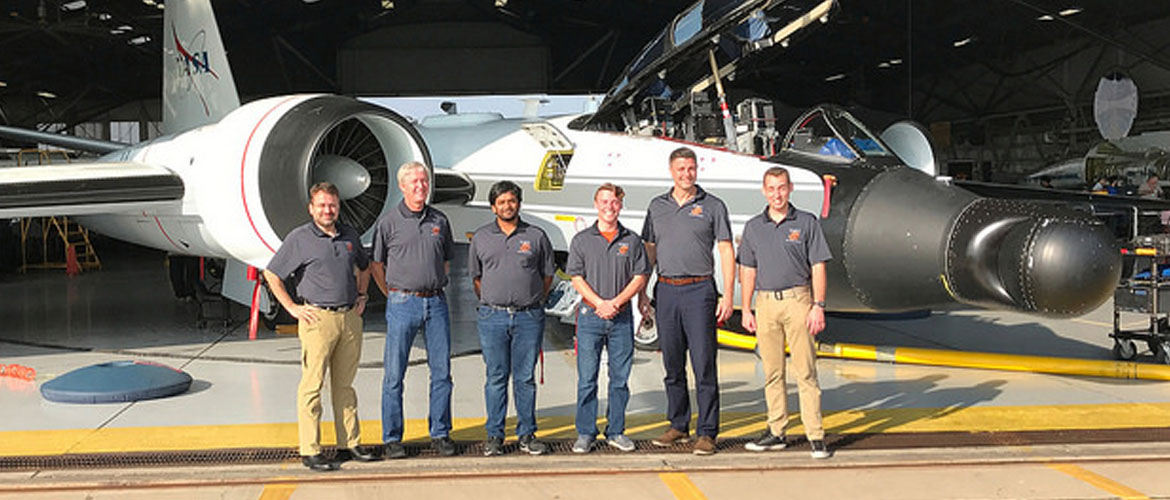
OSU Space Cowboys test weather instrument at extreme altitudes
Friday, December 1, 2017
Sending weather sensors to altitudes of more than 60,000 feet is no easy task, but a team of Oklahoma State University engineering students and faculty is doing just that at NASA’s Johnson Space Center in Houston.
The “Space Cowboys” have developed an instrument called the High Altitude Meteorological System (HAMS) as part of NASA’s Student Opportunities in Airborne Research (SOAR) program. The instrument, which records atmospheric conditions at different altitudes, is loaded aboard a NASA WB-57F high-altitude research aircraft to reach extreme heights, where temperatures can drop to 76 degrees below zero (Fahrenheit).
The engineering students have spent this week at the space center working on their system and watching tests onboard the aircraft.
“This supports OSU’s program for developing drones and sensors that support severe weather measurements to enhance forecasting, known as CLOUDMAP,” said Dr. Jamey Jacob, director of the Unmanned Systems Research Institute at OSU and a mechanical and aerospace engineering professor.
The student team has worked more than five months to design, build and test HAMS to meet NASA’s strict guidelines to prepare and install the system on the research aircraft. NASA hopes to use OSU’s data to better understand the extreme conditions encountered by the WB-57, which is only operated by the space agency.
The Space Cowboys team at NASA this week includes electrical and computer engineering student and team lead Aavron Estep from Stillwater, Okla., and mechanical and aerospace engineering students A.J. Burba from Stillwater, Okla., Kish Patel from Tulsa, Okla., and Michael Raymer from Broken Bow, Okla., along with Jacob, the faculty adviser.
Watch video of test flights and the Space Cowboys at work at Johnson Space Center at https://www.facebook.com/OSUSpaceCowboys/?fref=mentions
PHOTOS: https://www.flickr.com/photos/ostatenews/24875739028/in/dateposted/
